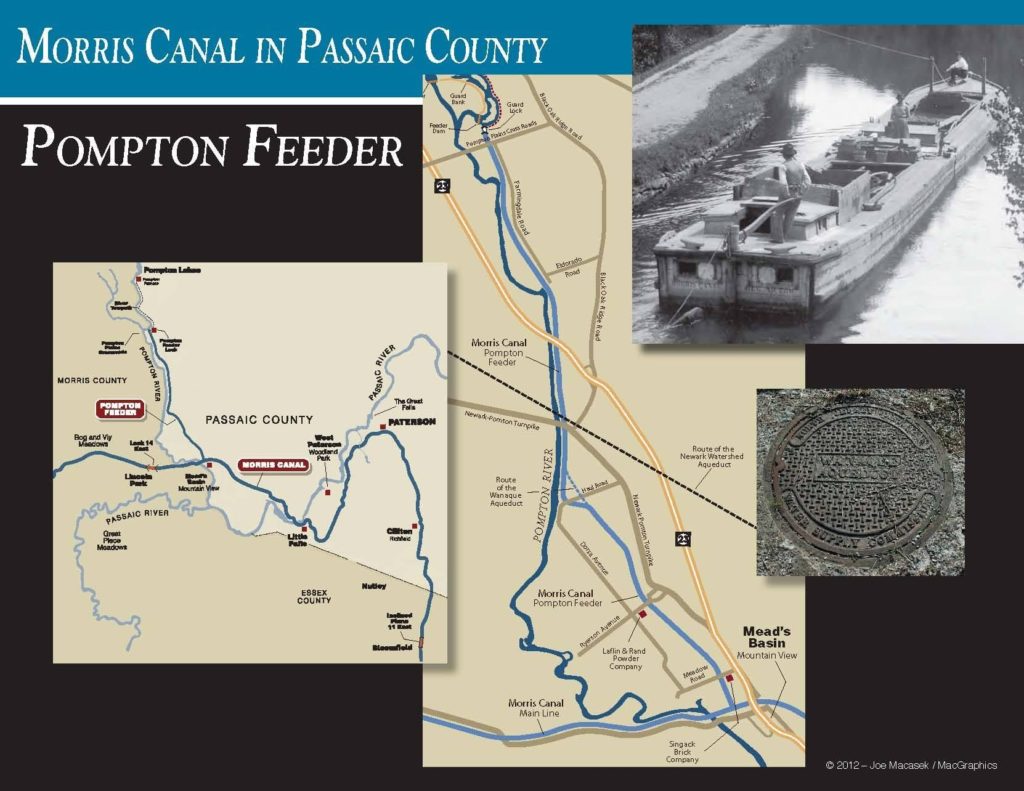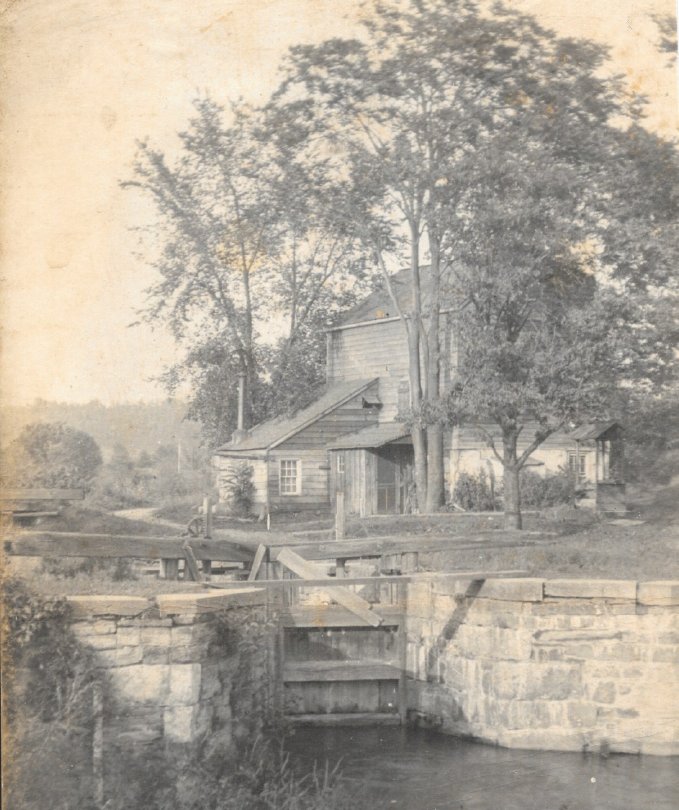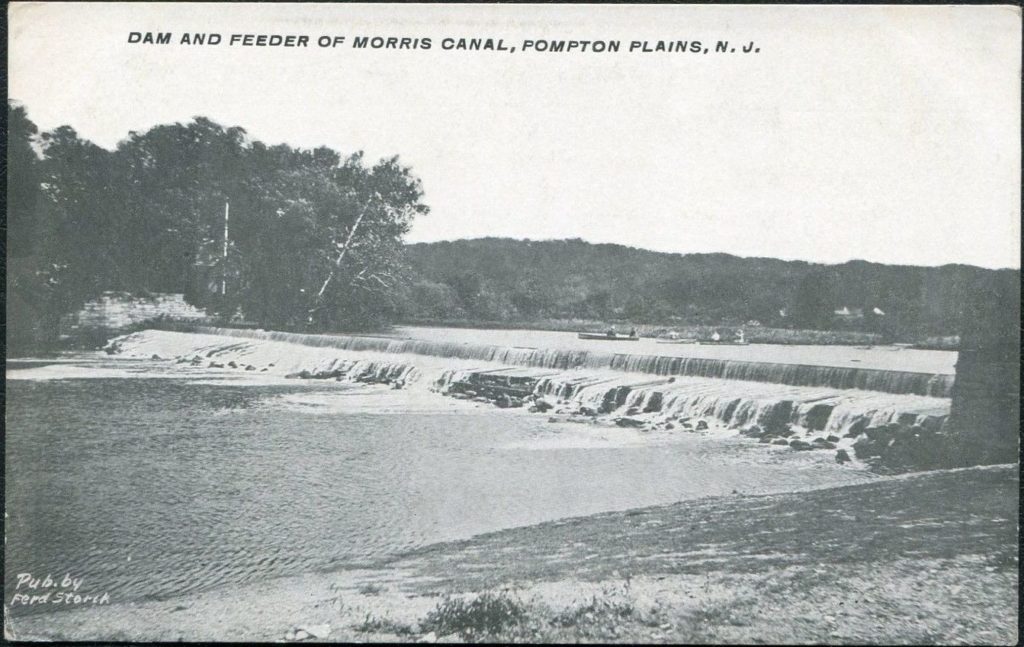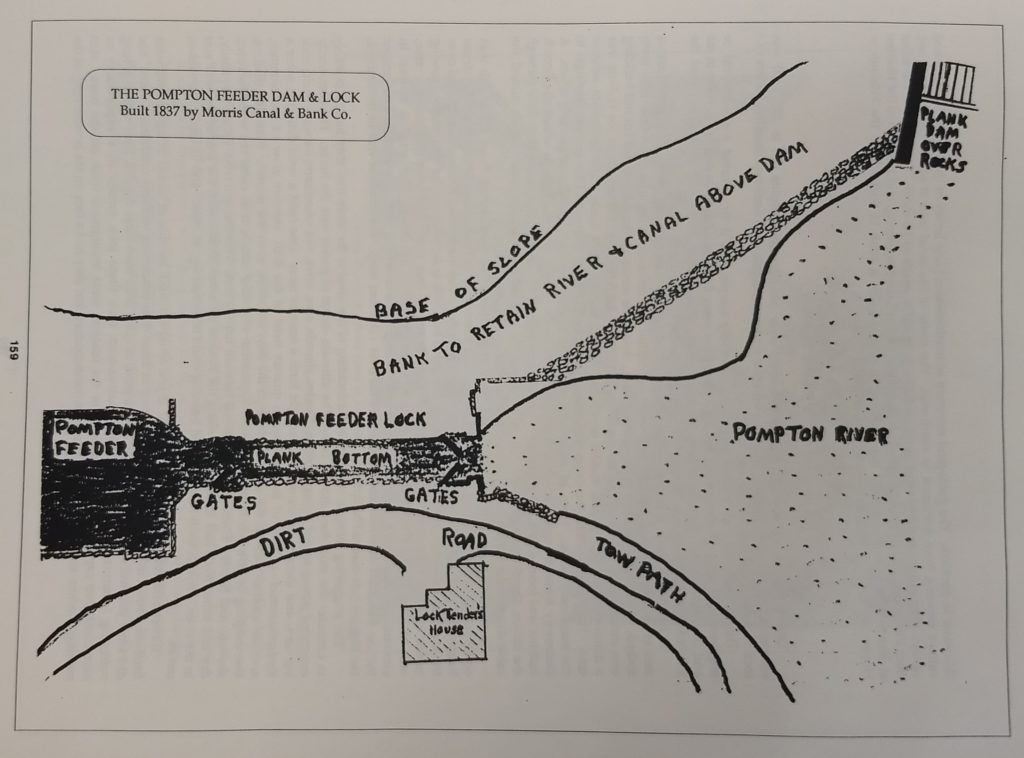Little remains of it today, but the “Pompton feeder” was an integral part of the Morris Canal system’s eternal need for water. The feeder was used to supply additional water to the Morris Canal by channeling water from the Pompton River. The feeder was, in fact, a navigable mini-canal that ran nearly five miles south from Schuyler’s Basin, at the river, to Mead’s Basin (known as Mountain View today). There was also a lock that afforded access to canal boats to the Ramapo River to head north.
The entire route looked like this. Click on it to view it full size.

A wide, low dam was built on the Pompton River in Pompton Plains, NJ in 1837, six years after the Morris Canal was completed. This supplied a feeder lock which could, at the lock tender’s discretion, release water into the feeder canal.
This diagram shows the setup: the river supplies water to the feeder canal via a lock. A lock tender lived in a house on site to release water as needed.
This early 20th Century photo shows the lock tender’s house and the lock.

The Pompton feeder canal primarily served as an artery of the Morris Canal. The feeder lock — which was just upstream of the feeder dam — not only helped to maintain the feeder canal’s water level. It also admitted canal boats which traveled up from Mead’s Basin (Mountain View), through the lock, and into the Ramapo River, carrying coal and other supplies north to the Pompton Furnace area in Pompton Lakes. The boats would carry iron (and on occasion other) products back down to Mead’s Basin.
According to historian Ed Lenik, “The Pompton Feeder was a significant waterway: it provided water from Greenwood Lake to the Morris Canal’s eastern division. Pig iron, bar iron, wood, and other products were shipped south and coal, building products, food, and other merchandise were shipped north.”
The feeder canal also provided splendid recreation year ’round — fishing and swimming and canoeing in warm weather, and ice skating in the winter.

The feeder canal more or less paralleled the Pompton River. This photo, taken near the Newark-Pompton Turnpike in Pequannock near the Wayne border, shows the river (left) and the feeder canal side by side. The canal still exists as a muddy ditch. The bridge carries the Newark Watershed pipeline over the river and on to the cities which it serves.
The Morris Canal was successful for about a century before succumbing to the faster and more efficient railroad system. It was decommissioned about 1924, and large sections of it were drained and used for other purposes. Only a small part of the feeder canal itself remains in lower Pequannock; the lock lies in ruins, and the lock tender’s house was razed long ago. What remains is the feeder dam and spillway, which are part of the Morris Canal Greenway initiative, which is “envisioned as a 111-mile continuous pedestrian and bicycle trail connecting six counties in northern New Jersey.” Many segments of the greenway have already been completed, and a trail map is available as a guide to them.


